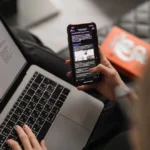When I first heard about the magic of AI for influencer marketing, I was intrigued but also a little sceptical. So, I decided to sit down with Emma, a digital marketing expert who has been diving deep into this intriguing blend of technology and social media. Over a cup of coffee, Emma took me through her journey and demystified how AI is changing the game for brands looking to find the perfect influencers. Here’s what I learnt from our chat.
The Starting Point: Understanding AI in Influencer Marketing
As we settled in, I asked Emma to explain the basics. “Using AI for influencer marketing is all about harnessing technology to identify influencers who align with your brand values and target audience,” she began.
Emma described how traditional methods—like manually searching through social media profiles—are not only time-consuming but also prone to human error. AI, on the other hand, can sift through vast amounts of data in seconds, providing a more accurate and efficient approach. “Imagine trying to find a needle in a haystack,” she said, “AI is like having a super magnet.”
The Tools of the Trade
Curious about the specifics, I asked Emma about the tools she uses. She mentioned a few names like HypeAuditor, Influencity, and Traackr. “These platforms use machine learning algorithms to analyse influencer profiles, engagement rates, audience demographics, and even fake follower detection,” she explained.
Emma showed me how HypeAuditor, for instance, provides a comprehensive report on influencers. This includes their follower growth, engagement rate, audience quality score, and even suggested fees. “It’s like having a virtual assistant who does all the heavy lifting for you,” she remarked.
The Process: From Data to Decision
Next, I wanted to know how Emma actually uses these tools in her day-to-day work. “It all starts with defining your campaign objectives,” she said. Whether you’re launching a new product or aiming to increase brand awareness, having clear goals is crucial.
Once the objectives are set, Emma inputs relevant keywords and hashtags into the AI tool. For example, if she’s working with a fitness brand, she might use terms like ‘fitness’, ‘health’, and ‘workout’. The AI then analyses thousands of profiles and narrows down a list of potential influencers.
“But it doesn’t stop there,” Emma added. She emphasised the importance of a manual review. “AI gives you a shortlist, but you still need to vet these influencers to ensure they truly align with your brand values and aesthetic.”
Measuring Success
I was also curious about how to measure the success of an AI-driven influencer campaign. Emma explained that most AI tools come with built-in analytics features. These allow you to track key performance indicators (KPIs) such as engagement rates, click-through rates, and conversions.
“One of the great things about using AI is the ability to conduct A/B testing efficiently,” she said. By running multiple campaigns with different influencers, you can quickly see what works and what doesn’t. The data-driven insights help in fine-tuning future campaigns for even better results.
Challenges and Pitfalls
Of course, no technology is without its challenges. Emma pointed out a few pitfalls to watch out for. “AI is only as good as the data it’s fed,” she warned. If the data is outdated or inaccurate, the recommendations will be too.
She also mentioned the importance of ethical considerations. “Just because an influencer has a high engagement rate doesn’t mean they’re the right fit for your brand,” she cautioned. “Authenticity and alignment with your brand values should always be a priority.”
Final Thoughts
By the end of our chat, I was convinced that AI has a significant role to play in influencer marketing. It offers a level of efficiency and accuracy that traditional methods simply can’t match. From defining campaign objectives and using specialised tools to measuring success and avoiding pitfalls, Emma’s insights provided a comprehensive guide for anyone looking to venture into this exciting field.
The blend of technology and creativity is what makes AI-driven influencer marketing so fascinating. It’s not just about finding any influencer; it’s about finding the right influencer who can authentically connect with your audience. As Emma eloquently put it, “AI takes care of the science, but the art is still very much in human hands.”











